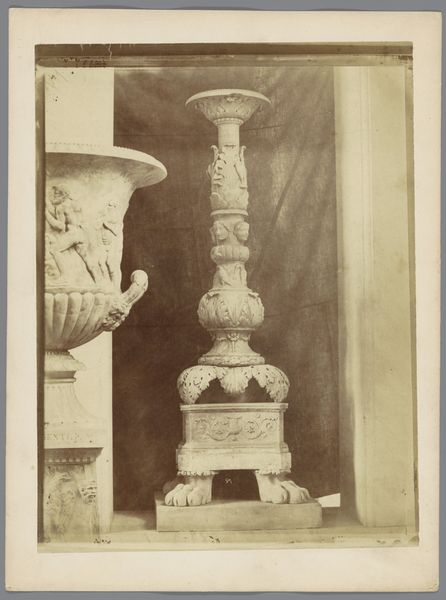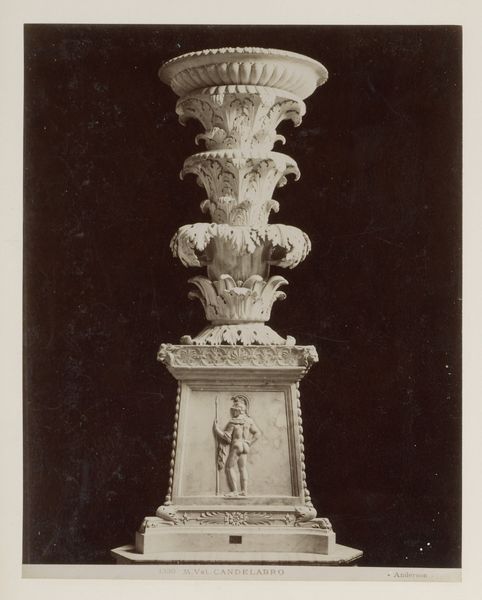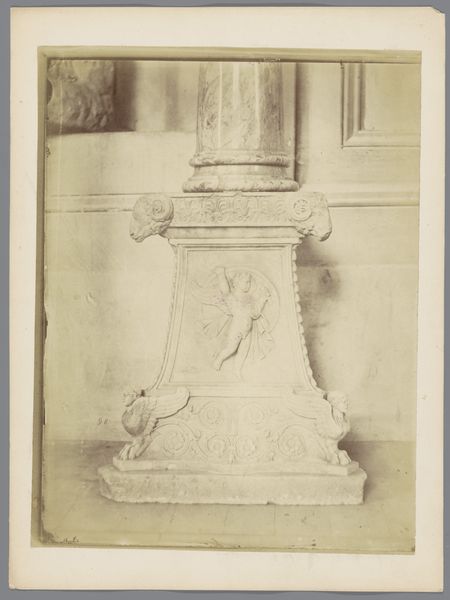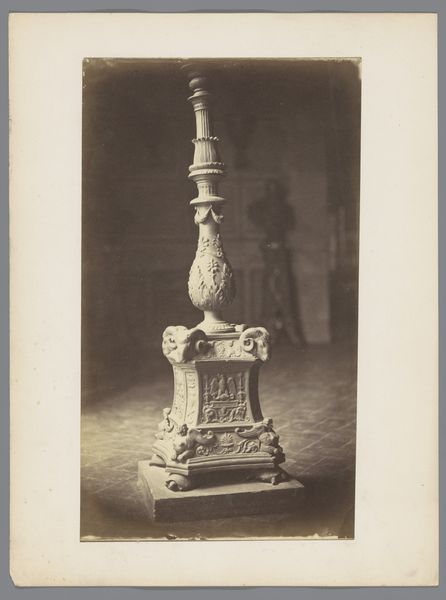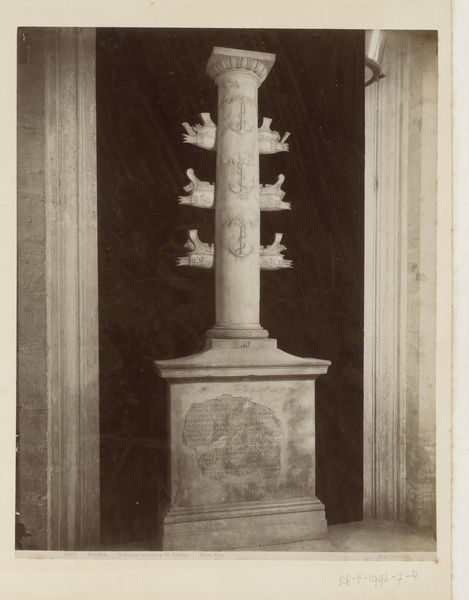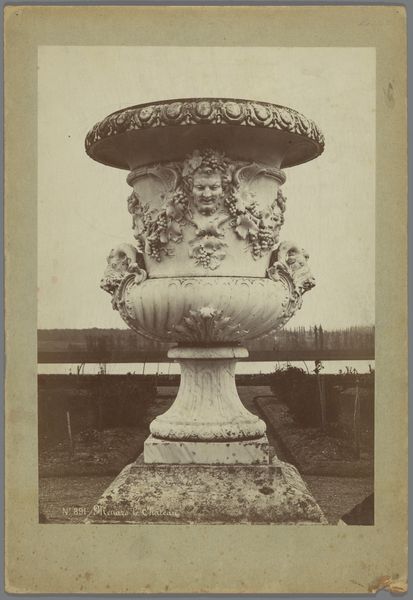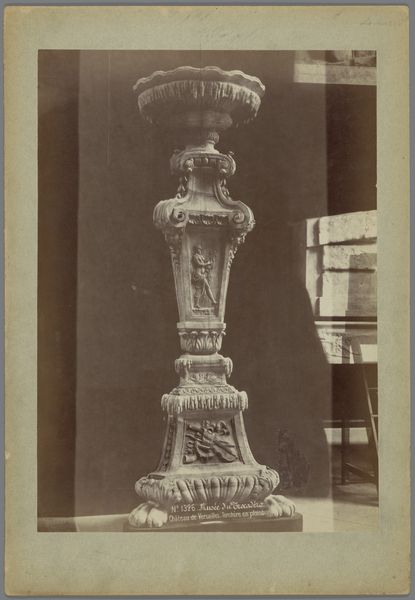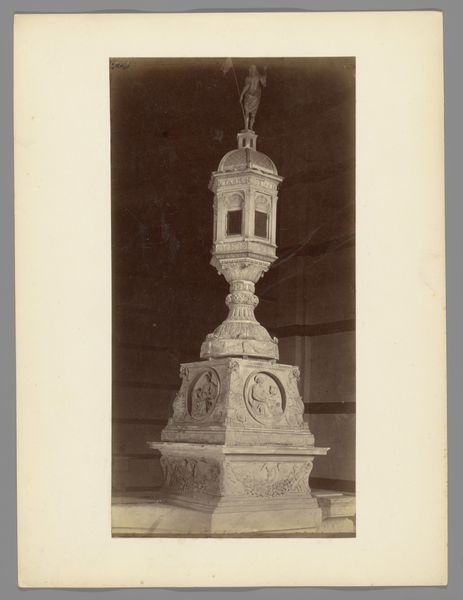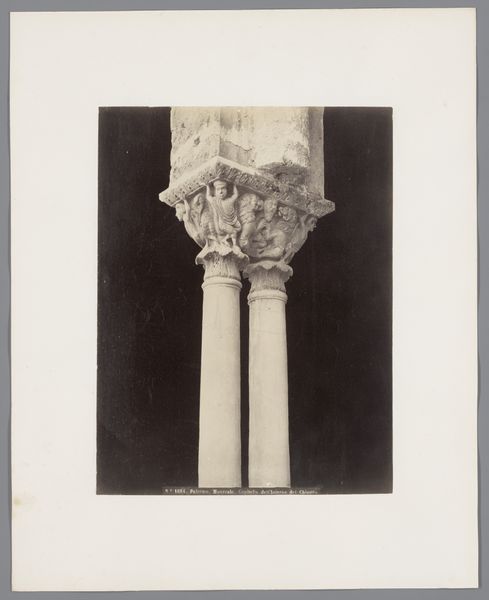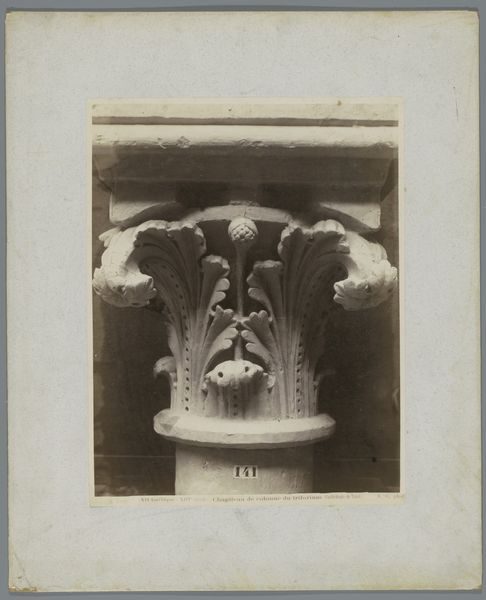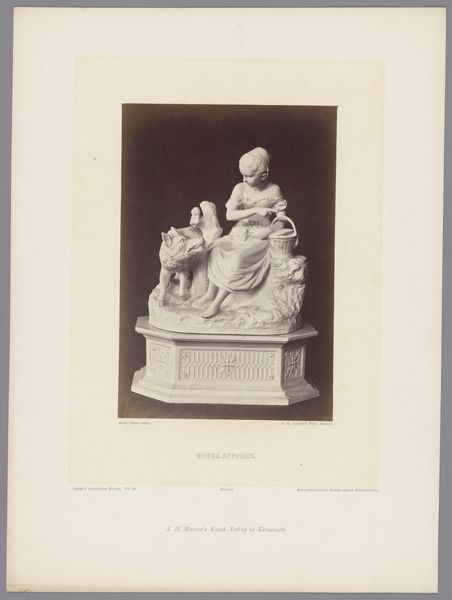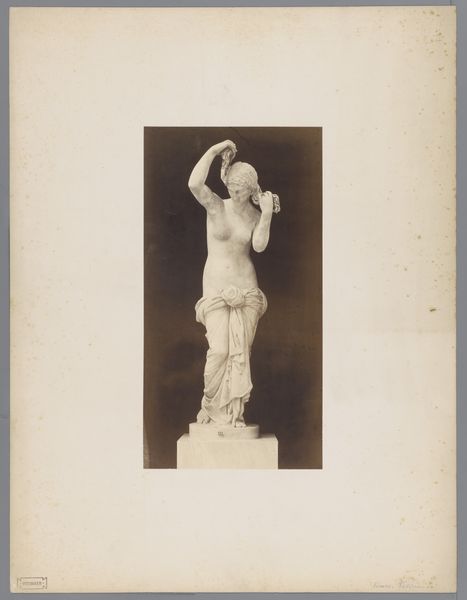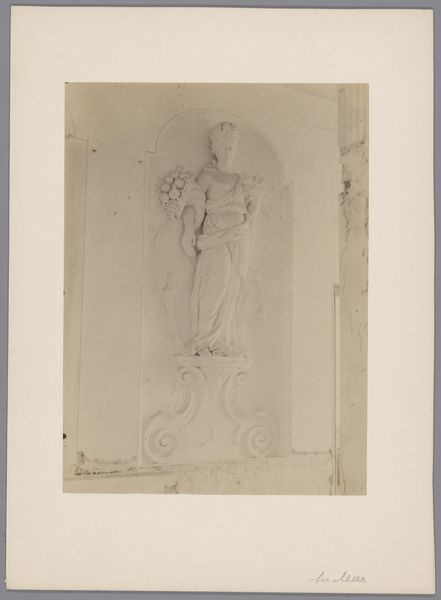
Doopvont met sculptuur van Maria met kind in de Dom van Pisa, Italië 1860 - 1881
0:00
0:00
photography, sculpture
#
portrait
#
landscape
#
photography
#
sculpture
#
italian-renaissance
Dimensions: height 255 mm, width 199 mm
Copyright: Rijks Museum: Open Domain
Curator: Looking at this, I immediately feel the weight of expectation. That stark stone, those solemn figures – a Madonna and Child – they exude an almost chilling severity. Art Historian: Indeed. What we're seeing here is a photograph, captured by Giacomo Brogi sometime between 1860 and 1881, documenting a baptismal font and sculpture within Pisa Cathedral, in Italy. Curator: A baptismal font…a symbol of cleansing, rebirth. But here, the aesthetic feels far from liberating. The grey scale lends a patina of age, but there's also an oppression of values, right? Gender, religion—how have these shaped access to freedom, especially for women and children? Art Historian: The Duomo itself is a powerful signifier. Consider the social function it performed. These images allowed patrons who could not travel to experience these grand works, reinforcing existing religious and societal hierarchies by associating them with artistic achievements. Curator: Absolutely. This artwork becomes part of a visual language constructing ‘good’ motherhood. Mary embodies sacrifice, quiet strength... how does this imagery limit representations of womanhood and perpetuate impossible standards? It certainly prompts many questions for me regarding how cultural norms are solidified and what resistance could look like. Art Historian: And further, what do we make of Brogi's role as the photographer? The documentation of cultural treasures allowed for the democratization of art. These photographs acted almost as early postcards or digital representations, available to all who wished to bring a piece of this visual culture home with them. Curator: That notion of democratization is complex. Who has access, whose stories are amplified, whose are silenced? I’m seeing the beginnings of mass distribution, yes, but always consider power. Looking closely, one wonders what the photographic conditions were during this era. The softness and darkness certainly reflect an artistic moment. Art Historian: It really invites us to think about how such pieces reinforced ideals in an expanding Italian society – not necessarily reflecting the daily lives of most, but inspiring and imposing expectations through its grand presentation. It has this staged theatricality and almost filmic composition. Curator: Ultimately, images like these are records of both the aesthetic values and societal power dynamics from the time, and need a critical approach from us. Art Historian: Indeed. It highlights the significance of understanding context and encourages continued discussion and understanding of socio-historical norms to reveal complexities.
Comments
No comments
Be the first to comment and join the conversation on the ultimate creative platform.
